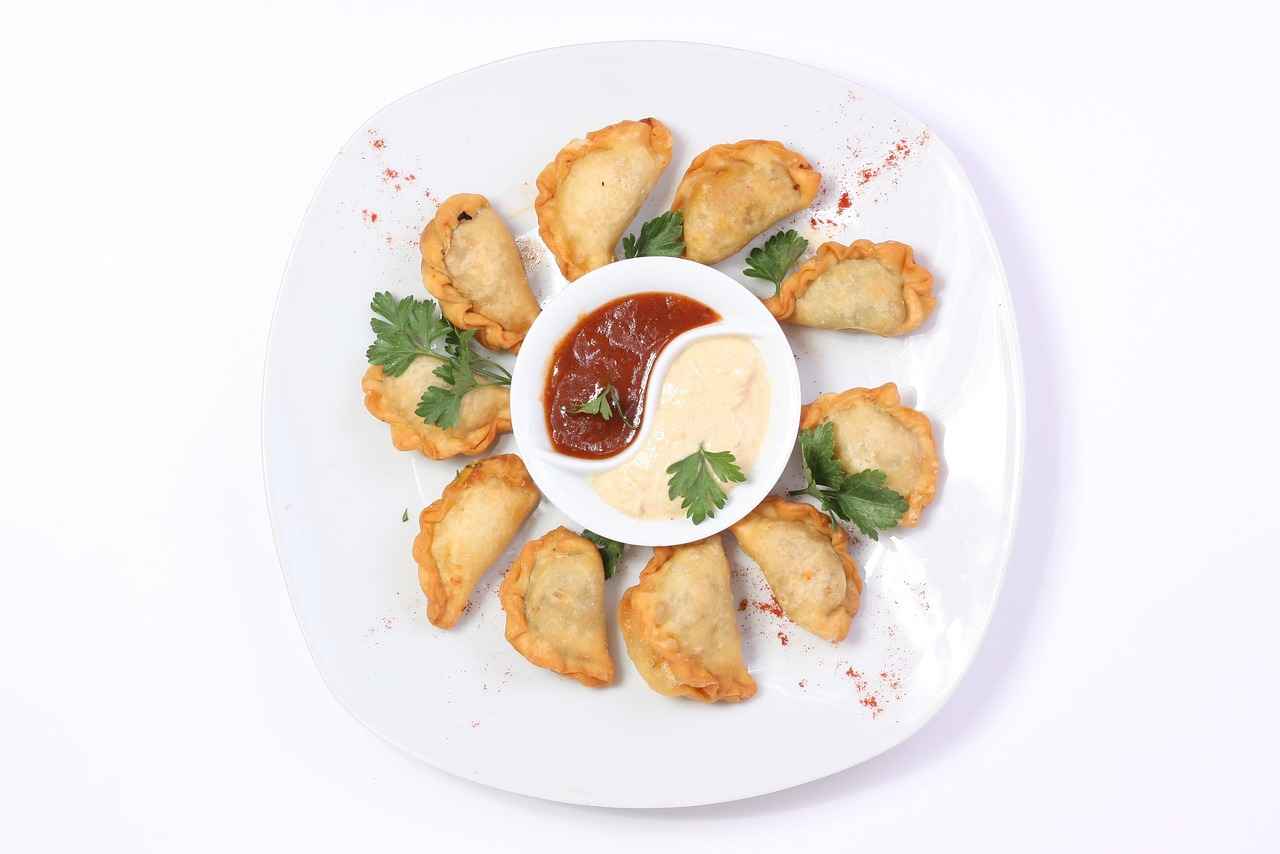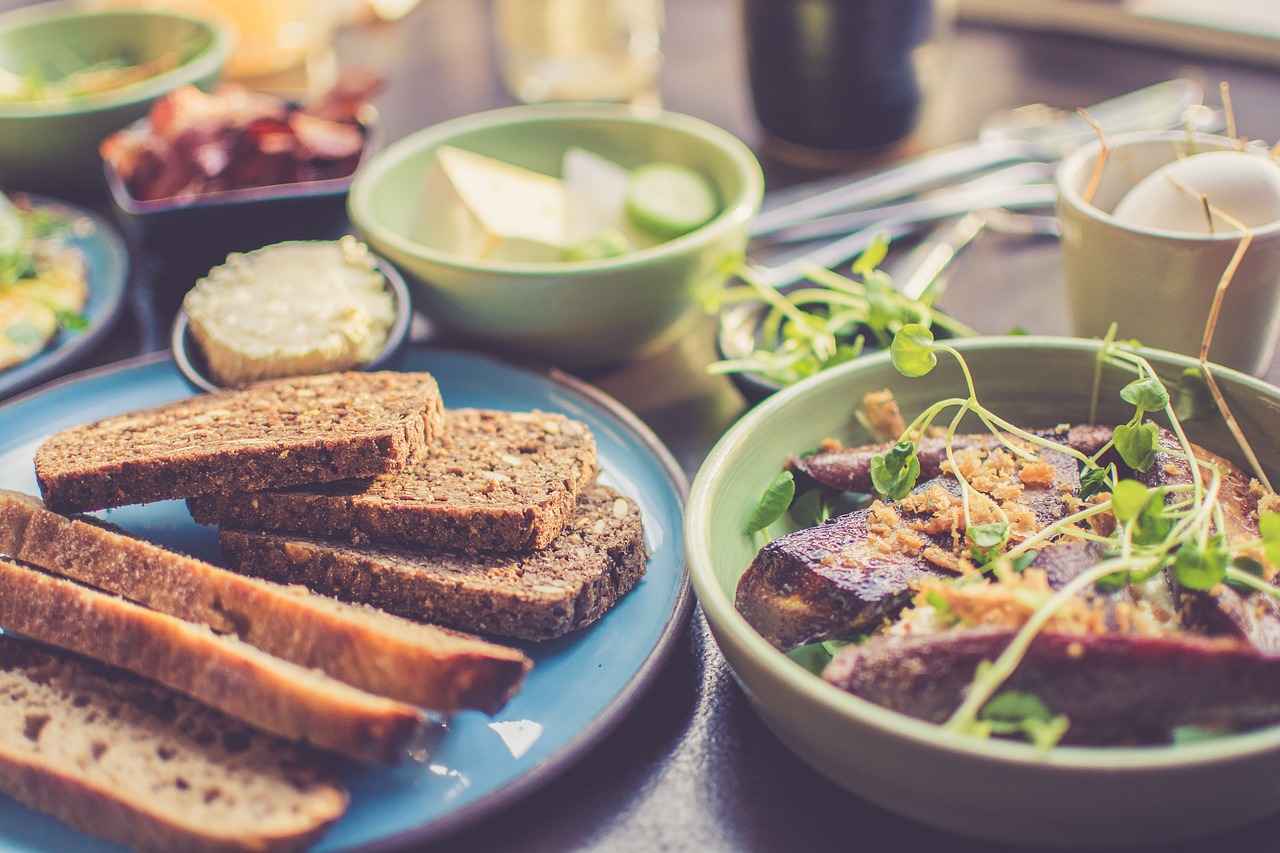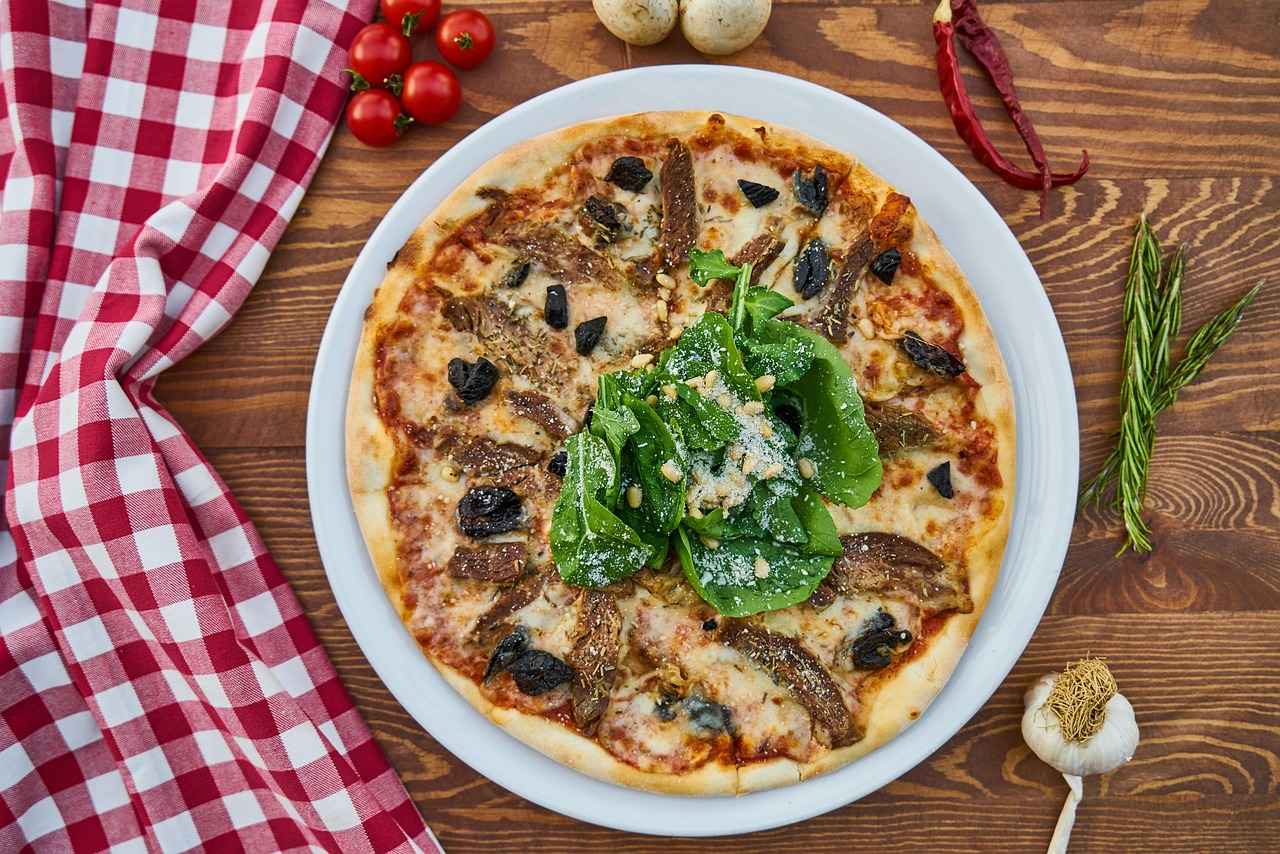This article explores the rich and diverse culinary landscape of West Bengal, highlighting must-try dishes that reflect the region’s unique flavors and cultural heritage. Known for its exquisite taste and variety, Bengali cuisine is a treasure trove for food lovers. From spicy fish curries to delectable sweets, the culinary offerings are a true reflection of the region’s vibrant culture.
1. Introduction to West Bengal Cuisine
West Bengal’s cuisine is a vibrant tapestry of flavors and traditions, influenced by its geography, history, and cultural diversity. The essence of Bengali food lies in its use of fresh ingredients, aromatic spices, and a balance of flavors. This cuisine not only satisfies the palate but also holds significant cultural importance, often being central to festivals and family gatherings.
2. Signature Dishes of West Bengal
From fish curries to sweets, West Bengal boasts a variety of signature dishes. Below are some iconic dishes that define Bengali culinary excellence:
- Fish Curry (Macher Jhol): A staple in Bengali households, this dish features fresh fish simmered in a fragrant curry.
- Shorshe Ilish: Hilsa fish cooked in a spicy mustard sauce, showcasing the region’s love for seafood.
3. The Sweet Side of Bengali Cuisine
Bengali cuisine is renowned for its sweets, with a variety of desserts that are both rich and flavorful. Some must-try sweets include:
- Rosgulla: A spongy, syrupy dessert made from chhena (curdled milk), cherished for its unique texture.
- Sandesh: A traditional sweet made from fresh paneer, showcasing the artistry of Bengali confectioners.
4. Street Food Delights
West Bengal’s street food scene is vibrant and diverse, offering quick bites that capture local flavors. Popular street foods include:
- Puchka (Pani Puri): A popular street snack filled with spicy tamarind water.
- Kathi Rolls: Skewered meat or vegetables wrapped in paratha, a convenient and delicious dish.
5. Conclusion: The Culinary Journey of West Bengal
West Bengal’s cuisine is a reflection of its rich culture and history. The diverse dishes, from savory to sweet, invite everyone to experience the unique flavors of Bengali food. Whether you are a local or a visitor, indulging in these culinary delights is a must!

1. Introduction to West Bengal Cuisine
West Bengal’s cuisine is a vibrant tapestry of flavors and traditions, influenced by its geography, history, and cultural diversity. This culinary landscape is not just about food; it is a reflection of the region’s rich cultural identity and a celebration of its heritage. Bengali food is characterized by its unique spice blends, use of fresh ingredients, and a deep-rooted connection to the land and water surrounding it.
The essence of Bengali food lies in its ability to tell stories through flavors. Each dish has a history and a significance that resonates with the local culture. The proximity to rivers and the Bay of Bengal has made fish a staple in many households, while the fertile plains contribute to a diverse range of vegetables and grains. This geographical diversity is mirrored in the variety of dishes that are prepared across the region.
Moreover, food in West Bengal is often linked to festivals and rituals, showcasing the importance of culinary traditions in everyday life. From the elaborate meals served during Durga Puja to the simple yet flavorful dishes enjoyed during family gatherings, every aspect of Bengali cuisine is steeped in meaning.
As you explore the culinary delights of West Bengal, you will discover that each meal is an invitation to experience the warmth and hospitality of the Bengali people. Whether it’s the spicy fish curry or the sweet indulgence of Rosgulla, every bite is a journey into the heart of Bengal. Join us as we delve deeper into the signature dishes that define this extraordinary cuisine.

2. Signature Dishes of West Bengal
A Guide to West Bengal’s Famous Cuisine: Dishes You Have to Try
West Bengal’s cuisine is a vibrant tapestry of flavors and traditions, influenced by its geography, history, and cultural diversity. This article explores the rich and diverse culinary landscape of West Bengal, highlighting must-try dishes that reflect the region’s unique flavors and cultural heritage.
From fish curries to sweets, West Bengal boasts a variety of signature dishes that are deeply rooted in its culture and history. The culinary excellence of this region is defined by its unique ingredients, cooking techniques, and age-old recipes passed down through generations. Here are some of the most iconic dishes that every food lover should experience:
- Macher Jhol – A traditional fish curry that is a staple in Bengali households, made with fresh fish, spices, and seasonal vegetables.
- Shorshe Ilish – Hilsa fish cooked in a spicy mustard sauce, showcasing the bold flavors of Bengali cuisine.
- Chingri Malai Curry – A luxurious shrimp curry made with coconut milk, perfect for special occasions.
- Bhapa Ilish – Steamed Hilsa fish with mustard and green chilies, offering a unique taste that is both simple and elegant.
- Shukto – A bitter-sweet vegetable medley that is often served as a starter, highlighting the use of seasonal produce.
Each of these dishes not only tantalizes the taste buds but also tells a story of the region’s rich culinary heritage. The use of fresh, local ingredients is a hallmark of Bengali cooking, and the balance of flavors—sweet, spicy, and savory—creates a unique dining experience.
In addition to the savory dishes, West Bengal is also famous for its sweets, which are an integral part of its culinary identity. The region’s desserts, such as Rosgulla and Sandesh, are celebrated for their rich flavors and textures, making them a must-try for anyone visiting.
In conclusion, the signature dishes of West Bengal are a reflection of its vibrant culture and history. Exploring these culinary delights offers a deeper understanding of the region’s traditions and the passion that goes into every meal.
2.1. Fish Curry (Macher Jhol)
Macher Jhol is more than just a dish; it is a culinary emblem of Bengali culture, cherished in households across West Bengal. This traditional fish curry is renowned for its delicate balance of flavors, making it a favorite among locals and visitors alike. Let’s delve into the ingredients, cooking techniques, and cultural significance of this beloved dish.
| Ingredients | Description |
|---|---|
| Fresh Fish | Typically, Hilsa or Rohu are used, each adding unique taste and texture. |
| Spices | A blend of turmeric, cumin, and coriander powder enhances the flavor. |
| Vegetables | Seasonal vegetables like potatoes and tomatoes are often included. |
| Mustard Oil | This oil is essential for its distinctive aroma and taste. |
The preparation of Macher Jhol is a culinary art that reflects the heart of Bengali cooking. The fish is typically marinated with turmeric and salt, then gently sautéed in mustard oil until golden brown. Following this, the spices are added, creating a fragrant base for the curry. The key is to simmer the fish in a rich, spiced gravy, allowing it to absorb all the flavors.
What makes Macher Jhol particularly special is its versatility. It can be enjoyed with steamed rice or luchi (fried flatbread), making it suitable for both everyday meals and festive occasions. This dish not only nourishes the body but also warms the soul, encapsulating the essence of Bengali hospitality.
In conclusion, Macher Jhol is more than just a meal; it is a celebration of Bengali heritage, showcasing the region’s love for fresh ingredients and bold flavors. Whether you are a seasoned cook or a curious foodie, this dish is a must-try for anyone looking to explore the culinary delights of West Bengal.
2.1.1. Types of Fish Used
Macher Jhol, a quintessential Bengali fish curry, is renowned for its rich flavors and comforting essence. The choice of fish plays a pivotal role in the overall taste and texture of this dish. Among the most common varieties used in Macher Jhol are Hilsa and Rohu.
| Fish Variety | Flavor Profile | Texture |
|---|---|---|
| Hilsa | Rich, oily, and slightly sweet | Soft and flaky |
| Rohu | Delicate and mild | Firm and meaty |
The Hilsa fish, often considered the king of fish in Bengali cuisine, is celebrated for its unique flavor and richness. Its high oil content contributes to a luxurious mouthfeel, making it a favorite among many. The fish is typically cooked with a variety of spices, allowing its natural flavors to shine through.
On the other hand, Rohu is a freshwater fish that offers a more subtle taste. Its firm texture holds up well in the curry, absorbing the spices beautifully. This versatility makes Rohu an excellent choice for those who prefer a milder flavor in their Macher Jhol.
Both fish varieties not only enhance the dish’s appeal but also provide significant cultural significance in Bengal. They are often associated with traditional celebrations and family gatherings, symbolizing togetherness and the rich culinary heritage of the region.
In conclusion, the choice between Hilsa and Rohu can greatly influence the final outcome of Macher Jhol. Each fish brings its own unique qualities to the dish, making it a delightful experience for anyone who enjoys Bengali cuisine.
2.1.2. Accompaniments to Macher Jhol
Macher Jhol, a quintessential Bengali fish curry, is not just a dish on its own; it is part of a larger dining experience that emphasizes harmony and balance in flavors. Traditionally, this delightful curry is accompanied by steamed rice, which serves as the perfect base to absorb the aromatic gravy and enhance the overall taste.
In addition to rice, a side of seasonal vegetables is often included, adding freshness and a variety of textures to the meal. These vegetables can vary based on the season, but common choices include:
- Potatoes – Often cooked with spices, they add a creamy texture.
- Cauliflower – Lightly sautéed or steamed, it complements the curry well.
- Spinach – A nutritious addition that brings a vibrant color to the plate.
- Green Beans – Their crunchiness offers a delightful contrast to the soft fish.
Moreover, a tangy achar (pickle) made from raw mango or lime is frequently served alongside Macher Jhol. This adds a zesty flavor that cuts through the richness of the curry, elevating the dining experience. The combination of these accompaniments not only creates a balanced meal but also showcases the vibrant culinary culture of West Bengal.
In essence, the accompaniments to Macher Jhol play a crucial role in highlighting the dish’s flavors, making each meal a celebration of Bengali cuisine. Whether enjoyed during a family gathering or a festive occasion, this combination remains a beloved staple in Bengali households.
2.2. Shorshe Ilish (Hilsa in Mustard Sauce)
Shorshe Ilish, or Hilsa in Mustard Sauce, is a quintessential dish that embodies the essence of Bengali cuisine. This dish not only tantalizes the taste buds but also holds a special place in the cultural fabric of West Bengal. The preparation of Shorshe Ilish is an art that requires skill and understanding of flavors.
The main ingredient, Hilsa fish, is revered for its rich, oily texture and unique flavor. To prepare Shorshe Ilish, the fish is first marinated with a blend of spices, including turmeric and salt. The highlight of this dish is the mustard sauce, made from a combination of yellow and black mustard seeds, which gives it a distinctive sharpness. The mustard seeds are ground into a paste and mixed with green chilies, creating a spicy and aromatic sauce.
Cooking Shorshe Ilish involves gently simmering the marinated fish in the mustard paste, allowing the flavors to meld beautifully. The dish is often finished with a drizzle of mustard oil, enhancing its flavor profile. Traditionally, it is served with steamed rice, which balances the dish’s spiciness and richness.
Beyond its delectable taste, Shorshe Ilish is steeped in cultural significance. It is often associated with the monsoon season, when Hilsa fish is at its best. Families gather to enjoy this dish during festive occasions, making it a symbol of togetherness and celebration. The dish is not just a meal; it represents the culinary heritage of Bengal, reflecting the region’s connection to its rivers and the bountiful fish they provide.
In conclusion, Shorshe Ilish is more than just a dish; it is a celebration of Bengali culture and flavors. Its preparation is a testament to the culinary skills passed down through generations, making it a must-try for anyone looking to explore the rich tapestry of West Bengal’s cuisine.

3. The Sweet Side of Bengali Cuisine
Bengali cuisine is not only famous for its savory dishes but also for its delectable sweets. The rich and flavorful desserts of Bengal are a testament to the region’s culinary artistry and cultural significance. This section delves into some of the most popular Bengali sweets that are a must-try for any dessert lover.
Rosgulla is perhaps the most iconic Bengali sweet. These soft, spongy balls made from chhena (curdled milk) are soaked in a light sugar syrup. Originating from the state of Odisha, Rosgulla has become synonymous with Bengali sweets and is celebrated for its melt-in-the-mouth texture. This dessert is often served during festivals and special occasions, symbolizing joy and celebration.
Sandesh is a traditional Bengali sweet made from fresh paneer, also known as chhena. It is often delicately flavored with cardamom or saffron and can be shaped into various forms, showcasing the craftsmanship of Bengali confectioners. Sandesh is not just a dessert; it is an art form, with intricate designs that make it visually appealing. This sweet is often gifted during festivals and celebrations, making it a staple in Bengali households.
Mishti Doi, or sweetened yogurt, is another beloved Bengali dessert. It is made by fermenting milk with jaggery, giving it a unique flavor that is both sweet and tangy. Traditionally served in clay pots, Mishti Doi is a refreshing end to a spicy Bengali meal and is often enjoyed during festivals and family gatherings.
Chamcham is a delightful sweet made from chhena, shaped into cylindrical pieces and soaked in sugar syrup. Often garnished with coconut or khoya (reduced milk), Chamcham is known for its rich flavor and appealing appearance. This sweet is popular during weddings and festive occasions, making it a favorite among sweet lovers.
In summary, Bengali sweets are a vital part of the region’s culinary identity. Each sweet has its own unique story and flavor profile, making them worth savoring. Whether you are celebrating a special occasion or simply indulging your sweet tooth, these desserts are sure to provide a delightful experience.
3.1. Rosgulla
Rosgulla is not just a dessert; it is a symbol of Bengali culture and culinary heritage. This delightful sweet treat is made primarily from chhena, which is curdled milk that has been drained of its whey. The result is a soft, spongy ball that is cooked in a light sugar syrup, creating a syrupy texture that is both refreshing and indulgent.
The origins of Rosgulla are steeped in history and debate. While many believe it originated in Bengal, others attribute its creation to the state of Odisha. Regardless of its true birthplace, Rosgulla has become a beloved dessert across India, particularly in West Bengal, where it is celebrated during festivals and special occasions.
One of the key features that makes Rosgulla special is its unique texture. When prepared correctly, these sweets are incredibly light and airy, almost dissolving in your mouth. The cooking process involves boiling the chhena balls in a sugar syrup, which allows them to absorb the sweetness while maintaining their delicate structure.
Rosgulla holds a special place in the hearts of Bengalis. It is often associated with celebrations and family gatherings, making it a staple at weddings and religious festivals. The sweet is not just a dessert; it represents the warmth of Bengali hospitality and the joy of sharing delicious food with loved ones.
In recent years, Rosgulla has gained international recognition, with many people outside India discovering its charm. Various adaptations have emerged, including flavored versions with saffron or rose essence, but the traditional plain Rosgulla remains the most cherished.
In conclusion, Rosgulla is more than just a dessert; it is a cultural icon that embodies the essence of Bengali cuisine. Its delightful taste and historical significance make it a must-try for anyone exploring the rich culinary landscape of West Bengal.
3.2. Sandesh
Sandesh is a beloved traditional Bengali sweet that epitomizes the region’s rich culinary heritage. Made primarily from fresh paneer (chhena), Sandesh is not just a treat for the taste buds but also a visual delight that showcases the artistry of Bengali confectioners.
This exquisite sweet comes in various forms, each reflecting the creativity and skill of its maker. The most common types of Sandesh include:
- Plain Sandesh: This is the simplest form, often flavored with cardamom and garnished with slivers of pistachio or almonds.
- Chocolate Sandesh: A modern twist, this variant incorporates cocoa powder, appealing to younger generations.
- Fruit Sandesh: Infused with natural fruit flavors like mango or strawberry, this version adds a refreshing taste.
- Sandesh with Sweets: Sometimes, Sandesh is stuffed with other sweets like kheer or rasgulla, creating a delightful fusion of textures and flavors.
The preparation of Sandesh is an art form in itself. The process begins with curdling milk to make paneer, which is then kneaded to achieve a smooth texture. The confectioner skillfully shapes the paneer into various designs, often using molds to create intricate patterns. This attention to detail is what makes Sandesh a standout in Bengali desserts.
Moreover, Sandesh is often associated with festivals and celebrations, making it a staple at weddings, birthdays, and religious occasions. Its delicate sweetness and soft texture make it a favorite among people of all ages.
In conclusion, Sandesh is more than just a sweet; it is a symbol of Bengali culture and tradition. Its diverse forms and rich flavors reflect the creativity of the artisans who make it, ensuring that this delightful treat continues to be cherished by generations to come.

4. Street Food Delights
West Bengal’s street food scene is not just vibrant; it is a culinary adventure that showcases the region’s rich cultural heritage and diverse flavors. The streets are alive with the aroma of spices and the sound of sizzling snacks, making it a paradise for food lovers. This section delves into some of the most popular street foods that truly capture the essence of local flavors.
- Puchka (Pani Puri): Often known as Pani Puri in other parts of India, Puchka is a delightful snack that consists of hollow, crispy puris filled with a mixture of flavored water, tamarind chutney, and spicy mashed potatoes. Each bite is a burst of flavors, making it a must-try for anyone visiting the streets of West Bengal.
- Kathi Rolls: A beloved street food, Kathi Rolls are made by wrapping skewered and grilled meat or vegetables in a paratha. This portable meal is not only delicious but also convenient for those on the go. The combination of spices and fresh ingredients makes each roll a unique experience.
- Jhal Muri: This popular snack is a spicy puffed rice mix, often combined with mustard oil, chopped onions, green chilies, and a variety of spices. Jhal Muri is perfect for those looking for a quick bite that’s both flavorful and filling.
- Chaat: The streets of West Bengal are filled with vendors selling various types of chaat, a savory snack made with a mix of potatoes, chickpeas, and tangy chutneys. The combination of textures and flavors makes chaat a favorite among locals and tourists alike.
- Fish Fry: A quintessential Bengali snack, fish fry consists of marinated fish fillets coated in breadcrumbs and deep-fried to perfection. Served with a side of tangy sauce, this dish is a testament to the region’s love for fish.
In conclusion, West Bengal’s street food is a reflection of its cultural diversity and culinary richness. Each dish tells a story and offers a taste of the local lifestyle, making it an essential part of any food lover’s journey in the region. Whether you are a local or a visitor, indulging in these street food delights is an experience that should not be missed.
4.1. Puchka (Pani Puri)
Puchka, also known as Pani Puri in various regions of India, is a beloved street snack that has won the hearts of many with its burst of flavors and textures. This delightful treat consists of hollow, crispy puris filled with a mix of spicy tamarind water, chickpeas, and potatoes, creating an explosion of taste with every bite.
The preparation of Puchka varies significantly across different regions, showcasing the culinary diversity of India. In West Bengal, for instance, the puris are often smaller and crispier, served with a tangy and spicy tamarind water that is a signature of the local style. In contrast, in other areas, the filling may include a variety of ingredients such as mung beans or boiled potatoes, and the water may be flavored with various spices, including cumin and mint.
The cultural significance of Puchka is profound. It is not just a snack but a part of Bengali social life. Vendors can be found in bustling streets, where people gather to enjoy this delightful treat, often sharing stories and laughter. This snack is particularly popular during festivals and celebrations, symbolizing joy and togetherness.
In addition to its taste and cultural relevance, Puchka also holds a special place in the hearts of food enthusiasts around the world. It has inspired numerous adaptations and has become a staple in Indian restaurants globally. Whether you are indulging in it at a local street stall or enjoying a gourmet version in a fine dining setting, Puchka remains a testament to the rich culinary heritage of India.
In conclusion, Puchka is more than just a snack; it is a culinary experience that encapsulates the vibrant flavors and cultural richness of West Bengal and beyond. Its variations and the joy it brings to gatherings make it a must-try for anyone exploring the street food scene.
4.2. Kathi Rolls
Kathi Rolls are not just a meal; they are a culinary experience that encapsulates the vibrant street food culture of West Bengal. This popular dish features skewered meat or vegetables, expertly wrapped in a flaky paratha, creating a perfect blend of flavors and textures. With their origins tracing back to Kolkata, Kathi Rolls have gained immense popularity, not just in India but across the globe.
History and Evolution
The history of Kathi Rolls dates back to the 1930s when they were first sold by vendors in Kolkata. Initially, the dish was a simple kebab served on a skewer, but as demand grew, it evolved into the rolled version we know today. The introduction of the paratha as a wrap made it a convenient street food option, allowing people to enjoy a hearty meal on the go.
Ingredients and Preparation
Traditional Kathi Rolls are made using a variety of ingredients, including:
- Skewered meats: Chicken, mutton, and paneer are popular choices.
- Vegetables: Bell peppers, onions, and carrots are often included for added crunch.
- Spices: A blend of spices enhances the flavor, with options for both spicy and mild versions.
- Paratha: The roll is wrapped in a freshly made paratha, adding a delightful texture.
To prepare Kathi Rolls, the meat or vegetables are marinated, grilled, and then wrapped in the paratha along with chutneys and salad, creating a deliciously satisfying meal.
Popularity and Variations
Today, Kathi Rolls are enjoyed by people of all ages and are available in numerous variations. Vegetarian options have also gained popularity, catering to diverse dietary preferences. Street vendors and restaurants alike serve Kathi Rolls, making them accessible to everyone.
Conclusion
Kathi Rolls exemplify the essence of street food—delicious, convenient, and bursting with flavor. Their rich history and evolving recipe make them a must-try for anyone looking to explore the culinary delights of West Bengal.

5. Conclusion: The Culinary Journey of West Bengal
West Bengal’s cuisine is a vibrant reflection of its rich culture and history, offering a unique culinary journey that captivates the senses. The diverse flavors of Bengali food are deeply intertwined with the region’s traditions, geography, and the influences of various communities that have settled here over the centuries. From the lush landscapes of the Sundarbans to the bustling streets of Kolkata, each dish tells a story, inviting food lovers to explore the essence of Bengali heritage.
The culinary landscape of West Bengal is characterized by its balance of flavors, with an emphasis on fresh ingredients and aromatic spices. Fish, rice, and lentils form the cornerstone of many meals, showcasing the region’s agricultural abundance. Signature dishes like Macher Jhol and Shorshe Ilish not only highlight the local catch but also reflect the time-honored cooking techniques passed down through generations.
Bengali sweets, such as Rosgulla and Sandesh, add a delightful sweetness to the culinary experience, embodying the artistry of Bengali confectioners. These desserts are often enjoyed during festivals and celebrations, symbolizing joy and community spirit.
Moreover, the street food scene in West Bengal is a vibrant tapestry of flavors and aromas, with offerings like Puchka and Kathi Rolls capturing the essence of local life. Each bite reflects the culinary creativity of the people, making it an essential part of the Bengali experience.
In conclusion, West Bengal’s cuisine is not just about food; it is a celebration of culture and history. The rich flavors and diverse dishes invite everyone to embark on a culinary journey that promises to be both memorable and rewarding. Whether you are savoring a home-cooked meal or indulging in street food, the flavors of Bengali cuisine are sure to leave a lasting impression.
Frequently Asked Questions
- What are the must-try dishes in West Bengal cuisine?
When exploring West Bengal’s culinary delights, don’t miss iconic dishes like Macher Jhol (fish curry) and Shorshe Ilish (Hilsa in mustard sauce). These dishes showcase the rich flavors and cooking techniques that define Bengali food.
- What makes Bengali sweets so special?
Bengali sweets, such as Rosgulla and Sandesh, are renowned for their unique textures and flavors. Made from fresh ingredients like chhena and paneer, these desserts reflect the artistry and cultural heritage of Bengal.
- Is street food in West Bengal safe to eat?
Absolutely! While enjoying street food like Puchka and Kathi Rolls, just ensure you choose vendors who maintain cleanliness. The vibrant street food scene is a delicious way to experience local flavors!
- Can I find vegetarian options in Bengali cuisine?
Yes, West Bengal offers a variety of vegetarian dishes. From shobji bhaja (fried vegetables) to aloo posto (potatoes in poppy seed paste), there’s plenty for vegetarians to savor!
- What is the best way to enjoy Bengali food?
The best way to enjoy Bengali cuisine is with a traditional meal served on a banana leaf. Pair your dishes with steamed rice and relish the flavors in a communal setting for an authentic experience!


























































